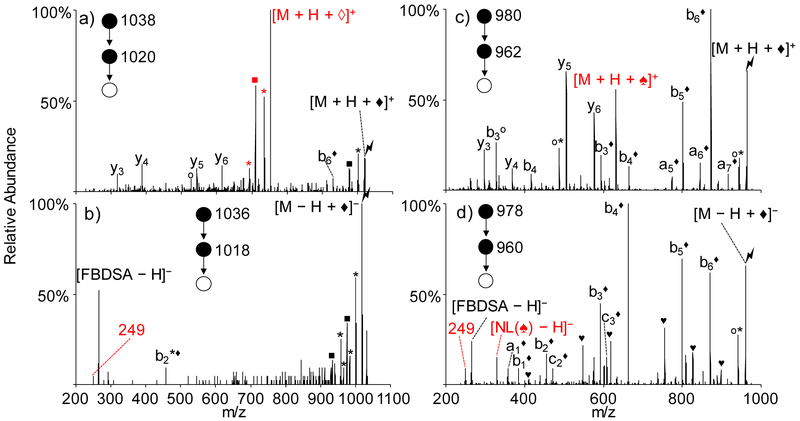Figure 2.
Ion trap CID of the gas-phase Schiff-base-modified peptides formed using (a) singly deprotonated FBDSA and doubly protonated RARARAA, (b) doubly deprotonated FBDSA and singly protonated RARARAA, (c) singly deprotonated FBDSA and doubly protonated HAHAHAA, and (d) doubly deprotonated FBDSA and singly protonated HAHAHAA. Degree symbols (°) denote water losses (−18 Da). Asterisks (*) denote ammonia losses (−17 Da). Black solid diamonds (♦) denote ions with Schiff base modification (+248 Da). Solid squares (■) denote the arginine side chain methanediimine (H2N=C=NH2) losses to form ornithine (−42Da). Solid hearts (♥) denote carbon dioxide losses (−44 Da). Hollow diamonds (◊) denote peptide rearrangement products (−19 Da) with the formation of the AMBDSA neutral loss. Solid spades (♠) denote histidine-specific rearrangement products (−82 Da) with the formation of the 330 Da neutral loss. All rearrangement related products are labeled in red.

